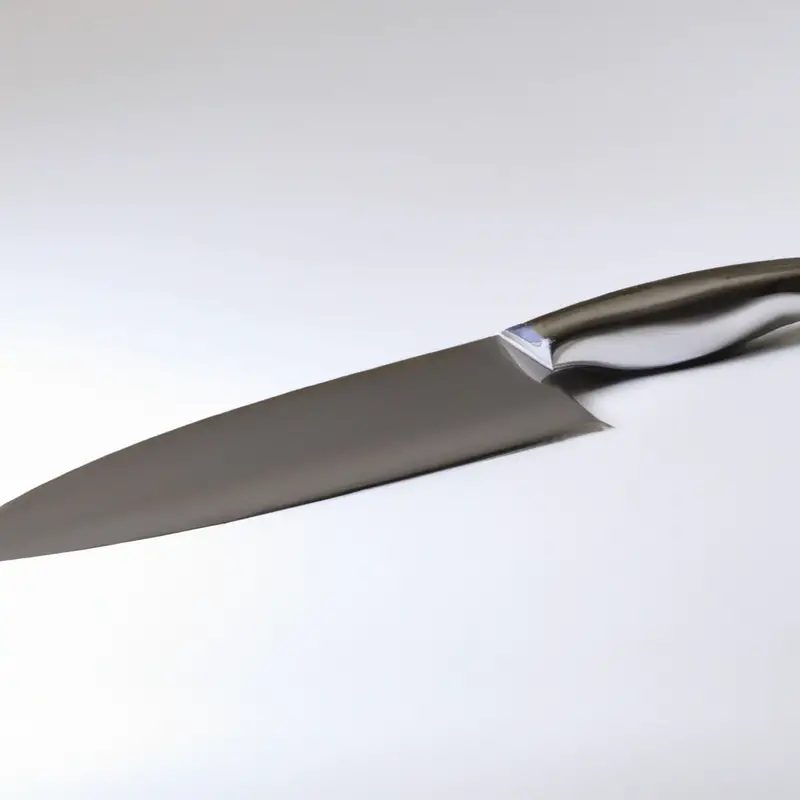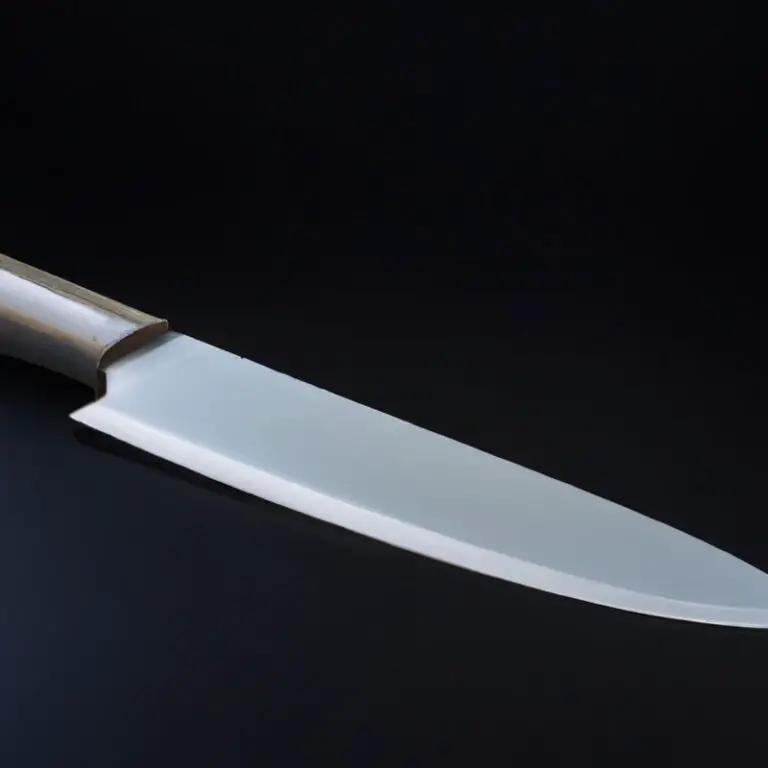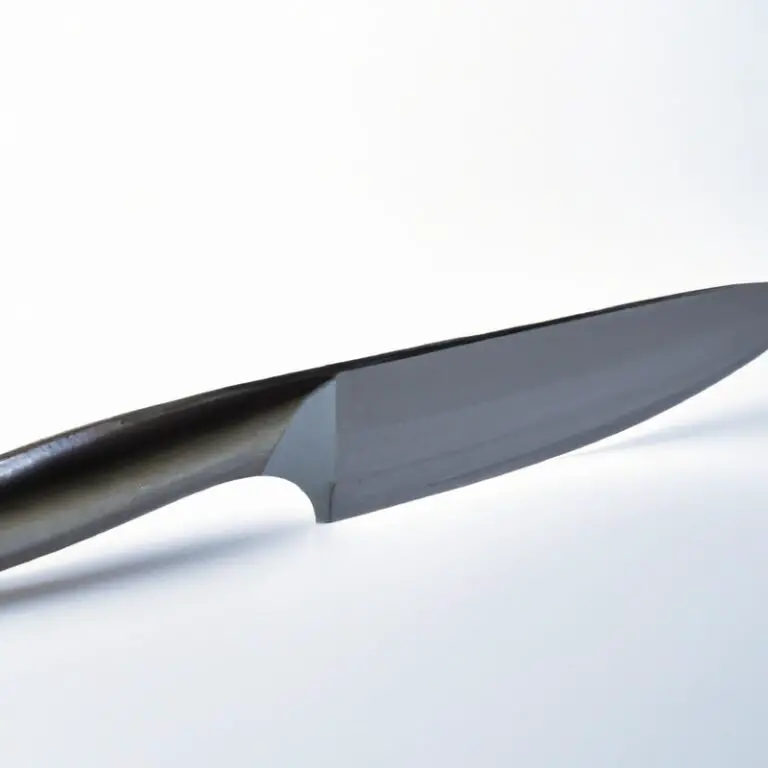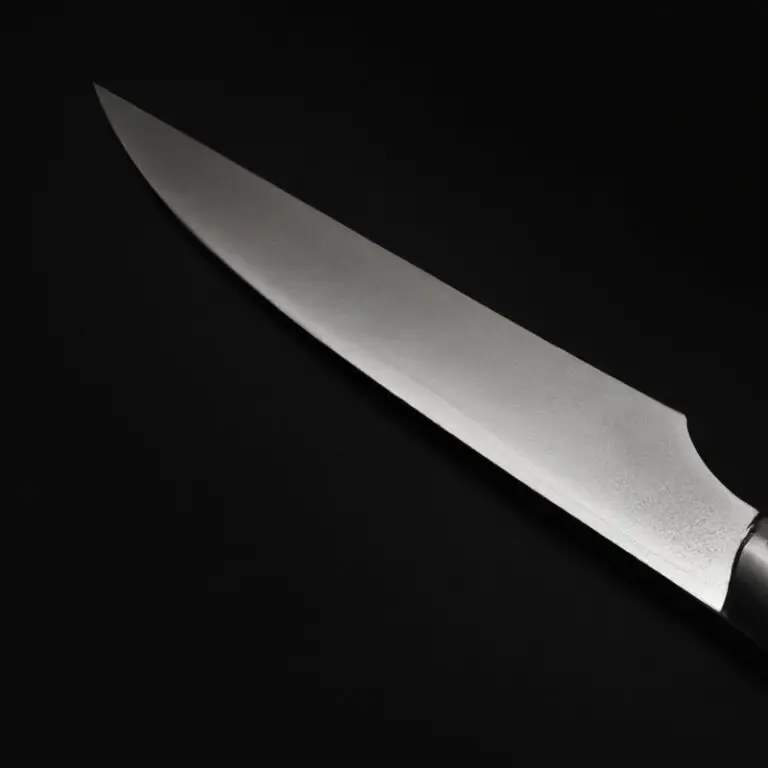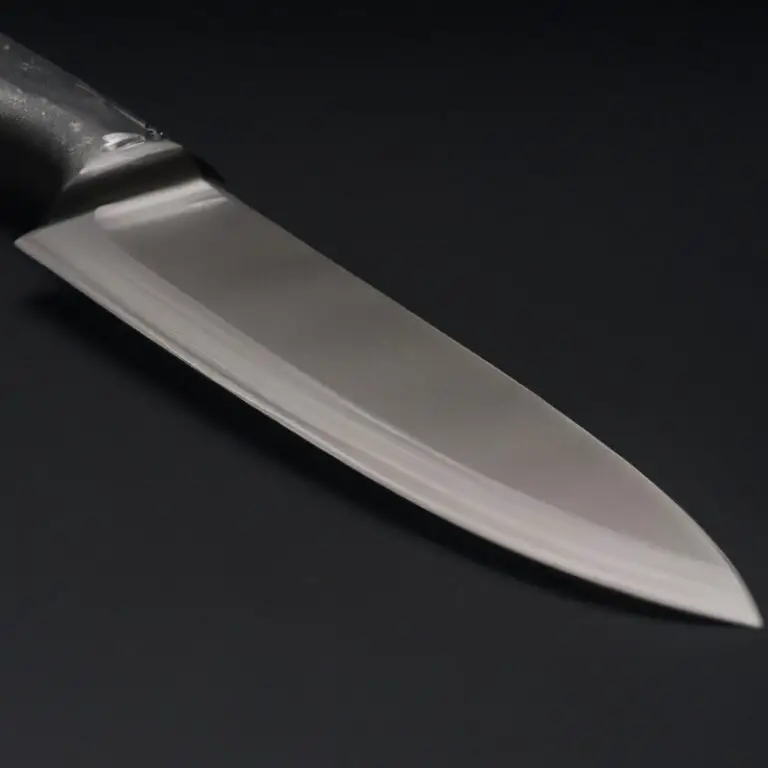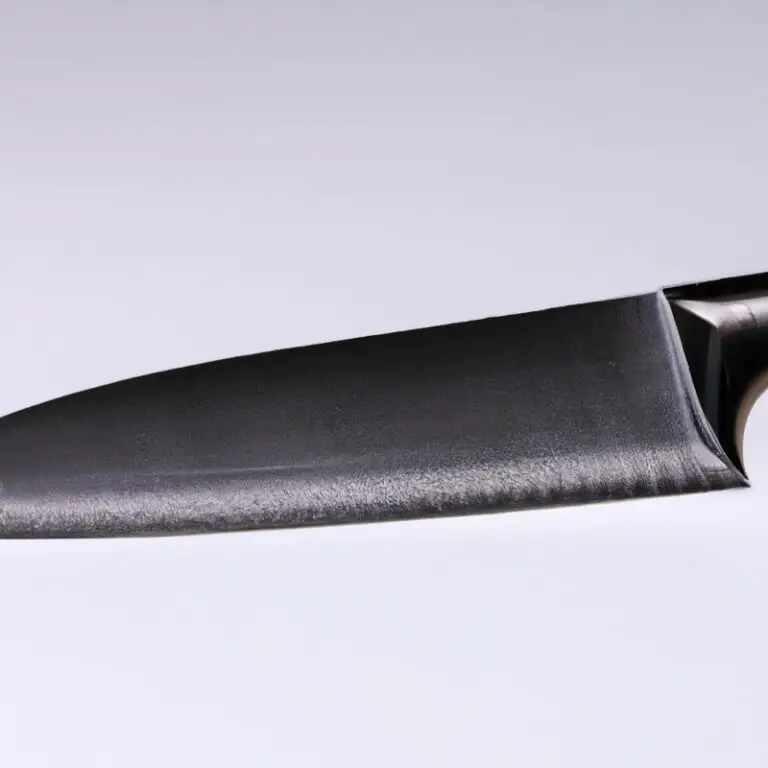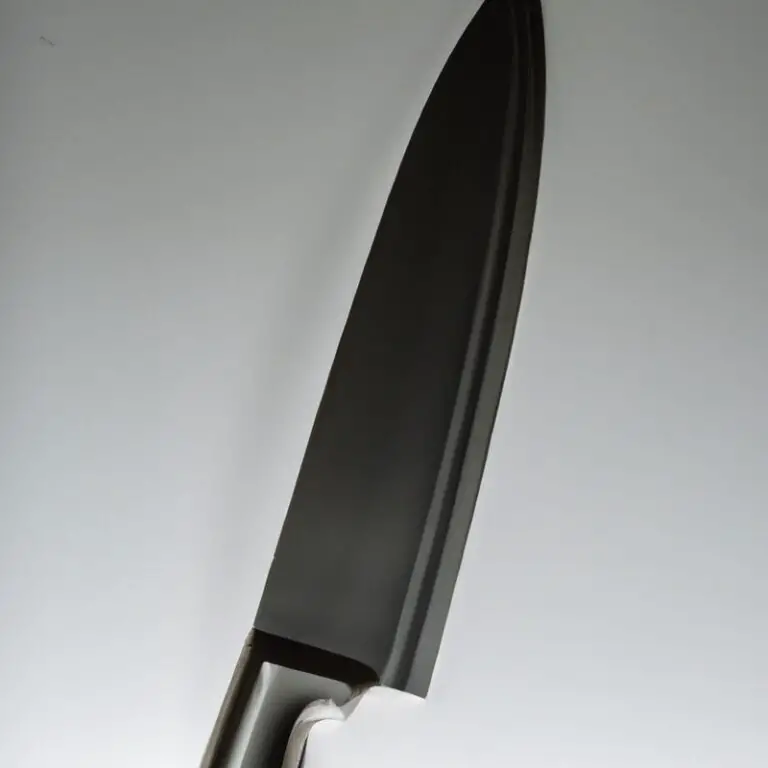How To Julienne Eggplants With a Santoku Knife? Easy!
Key Takeaways:
- Julienne eggplants with a Santoku knife by first cutting off the top and bottom, then slicing the eggplant lengthwise into thin planks.
- Stack the planks and cut them into thin strips (julienne) with the Santoku knife, using a rocking motion.
- Julienne eggplants are perfect for stir-fries, salads, and many other dishes, adding a unique texture and flavor to your meals.
- With practice and patience, you can master the art of julienning eggplants with a Santoku knife and impress your friends and family with your culinary skills.
Are you tired of struggling to julienne eggplants with a regular kitchen knife? Look no further than the Santoku knife.
With its unique features and sharp blade, this Japanese knife makes julienning a breeze.
But how do you choose the right Santoku knife for the job? And what about safety measures and proper maintenance?
In this article, I’ll guide you through the process of julienning eggplants with a Santoku knife, from preparing the eggplant to advanced cutting techniques.
Get ready to elevate your cooking skills and impress your dinner guests with perfectly julienned eggplants.
| Step | Instructions |
|---|---|
| 1 | Wash and dry the eggplants thoroughly. |
| 2 | Cut off the top and bottom of the eggplant. |
| 3 | Stand the eggplant up on one of its cut ends. |
| 4 | Make vertical slices along the eggplant, about 1/4 inch apart. |
| 5 | Stack the slices and cut them into matchsticks. |
| 6 | Rinse the eggplant matchsticks and pat them dry. |
| 7 | Your eggplant is now julienned and ready to use! |
Understanding the Santoku Knife: A Guide to its Unique Features
The Santoku knife is a popular Japanese kitchen tool that is gaining popularity worldwide. It has unique features that set it apart from other types of knives.
One of the defining features is its blade design, which typically measures between 5 to 7 inches and has a straight edge and a sheep’s foot tip.
This design allows for a more even and precise cut. Additionally, the blade is made with harder steel than traditional Western knives, making it extremely durable and resistant to wear and tear.
Another unique feature of the Santoku knife is its hollow edge, which helps to prevent food from sticking to the blade.
These features make the Santoku knife an excellent choice for julienning vegetables like eggplants, as it provides a comfortable and efficient cutting experience.
How to Choose the Right Santoku Knife for Julienne Eggplants
When selecting a Santoku knife for julienne eggplants, there are a few key factors to consider. First, ensure that the knife has a sharp blade as a dull blade can make it challenging to achieve clean cuts.
Look for a knife with a thin, straight blade that allows you to slice through the eggplant with ease.
A knife with a length of around 7-8 inches is recommended for julienne cuts. The handle of the knife is also essential, as it should provide a comfortable grip and balance.
Look for a Santoku knife with a handle that is ergonomically designed to fit comfortably in your hand.
Additionally, consider the material of both the blade and handle. For example, high-quality Japanese steel is often preferred for Santoku knives as it is durable and resilient.
When selecting a Santoku knife, it is also important to consider your budget.
While high-end knives can offer superior performance, they may be out of reach for some budgets. Set a realistic budget and choose a knife that offers a good balance of quality and affordability.
In summary, when choosing a Santoku knife for julienne eggplants, look for a sharp, thin, straight blade, an ergonomic handle, and a material of good quality within a realistic budget.
Preparing the Eggplant: Washing and Trimming
Before julienning the eggplant, it is essential to properly wash and trim it. Start by rinsing the eggplant under cold running water and scrubbing it gently with a vegetable brush to remove any dirt or pesticides.
Then, with a sharp knife, trim off the stem and calyx at either end of the eggplant.
You can also peel the skin off if desired, but it is not necessary. Once the eggplant is washed and trimmed, you can proceed to julienne it with your Santoku knife.
Proper preparation will ensure that your eggplant is clean and ready to be cooked or used in your recipe.

The Right Cutting Technique: How to Hold the Knife and Eggplant
When it comes to julienning eggplants with a Santoku knife, the right cutting technique starts with how you hold the knife and the eggplant. First, place the eggplant on its side and use your non-dominant hand to hold it securely in place.
Then, grasp the Santoku knife with your dominant hand and use a comfortable grip with your fingers curled securely around the handle.
Next, position the Santoku knife at a slight angle and make a gentle slicing motion down the eggplant, starting from the top. It is important to keep a consistent pressure and angle when cutting to ensure evenly sized julienne strips.
Repeat this motion until you have cut the entire length of the eggplant.
Remember to always use a sharp knife and avoid using excessive force, which can result in injuries. With practice, you can master the right cutting technique for julienning eggplants with a Santoku knife, making it easier and faster to prepare this versatile ingredient for a variety of dishes.
Safety Measures: Tips to Minimize Knife-Related Accidents
Safety Measures: Tips to Minimize Knife-Related Accidents
- Always use a sharp knife to avoid slips and accidents.
- Keep your non-cutting hand away from the blade and use a claw-like grip when holding the item being cut.
- Avoid cutting on unstable surfaces, such as a wobbly cutting board or an uneven countertop.
- Don’t rush the process. Take your time and cut slowly to prevent accidents.
- Use a knife appropriate for the task. A Santoku knife is ideal for julienne cuts, but not for tasks such as boning or filleting.
- Always cut away from your body and keep your fingers tucked in.
- Keep your knife clean and dry to avoid slips.
- Store knives properly and away from children’s reach.
- Never catch a falling knife, let it drop and reach for it once it has come to a stop.
- Always handle knives with care and respect. Remember that a knife is a sharp tool and should be treated accordingly.
Step-by-Step Guide: How to Julienne Eggplants for Your Recipes
To julienne an eggplant for your recipes, first, wash and trim the ends of the eggplant. Then, cut the eggplant in half lengthwise and place the flat side down on the cutting board.
Hold the eggplant with one hand and use a sharp Santoku knife to make thin slices, about 1/8 inch thick, along the length of the eggplant.
Stack the slices and cut them into thin matchsticks, also about 1/8 inch thick. Repeat the process until you have the desired amount of julienne-cut eggplant.
Remember to maintain a steady hand and keep your fingers away from the blade to avoid injuries.
Maintaining Your Santoku Knife: Proper Cleaning and Sharpening Techniques
Maintaining your Santoku knife is essential for its longevity and optimal performance. Here are some proper cleaning and sharpening techniques to keep your knife in top condition:
- Cleaning:
- Wash your knife by hand with warm water and mild soap; never put it in the dishwasher.
- Dry it immediately after washing to prevent water spots and rust.
- Avoid using abrasive cleaning tools or harsh detergents that can damage the blade.
- Store your knife in a designated area to prevent it from rubbing against other utensils and getting damaged.
- Sharpening:
- Use a whetstone or sharpening tools to maintain your knife’s edge.
- Angle your blade at around 15-20 degrees when sharpening.
- Sharpen both sides of the blade evenly.
- Test the sharpness of your knife regularly by slicing through a piece of paper or tomato.
By following these proper cleaning and sharpening techniques, you can ensure your Santoku knife stays sharp, safe, and reliable for all your cooking needs.
Quick and Easy Eggplant Recipes: Utilizing Your Julienne-Cut Eggplants
Utilizing your julienne-cut eggplants in quick and easy recipes can add depth and flavor to your dishes. Here are three simple eggplant recipes that you can make with your julienne-cut eggplants:
- Eggplant stir-fry: In a wok or frying pan, heat up oil and add garlic and ginger. Next, add in your julienne-cut eggplants with other vegetables of your choice such as bell peppers, carrots, and onions. Add soy sauce, oyster sauce, and a little bit of sugar for seasoning. Top with sesame seeds and serve with rice.
- Eggplant Parmesan: Coat your julienne-cut eggplants with breadcrumbs and Parmesan cheese, then bake them in the oven until crispy. Layer them with marinara sauce and mozzarella cheese, and bake until bubbly. Serve with a side of spaghetti or garlic bread.
- Eggplant chips: Coat your julienne-cut eggplants with olive oil and spices, such as garlic powder, paprika, and salt. Bake them in the oven until crispy, and serve as a healthy snack or side dish.
Try out these quick and easy eggplant recipes to elevate your meals and impress your guests with the versatility of your julienne-cut eggplants!
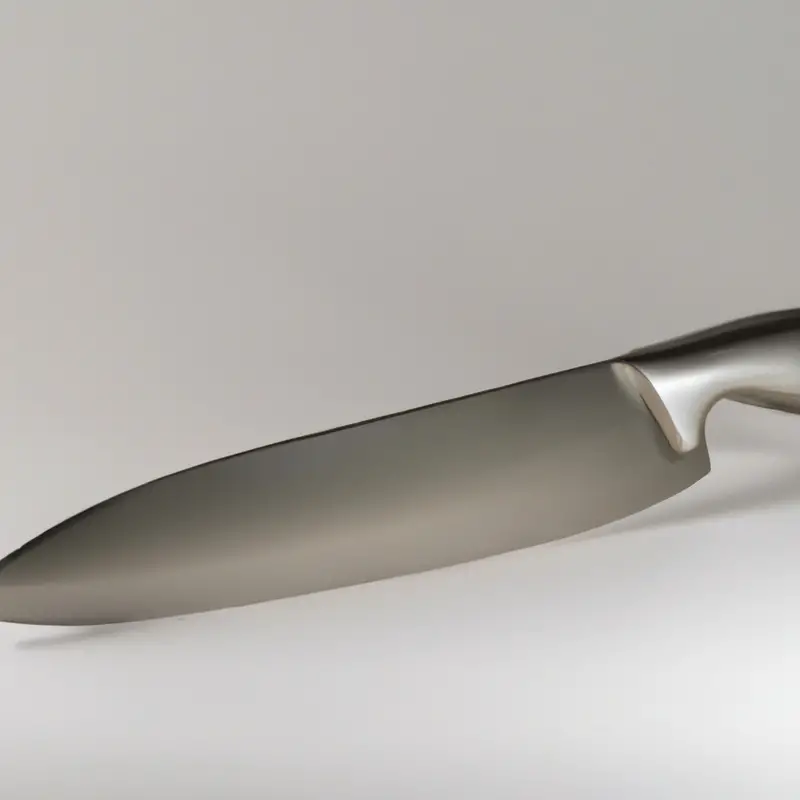
Common Mistakes to Avoid When Using a Santoku Knife for Julienne Cuts
Common Mistakes to Avoid When Using a Santoku Knife for Julienne Cuts:
- Using the Wrong Knife: Avoid using a serrated or thick blade knife for julienne cuts as it won’t provide the required precision. A Santoku knife is ideal for this task.
- Wrong Technique: Avoid placing your finger on top of the blade, using too much force, and improper positioning of the other hand on the eggplant.
- Failure to Sharpen: A dull blade is a recipe for disaster. Make sure to sharpen your Santoku knife before using it.
- Using a Worn-Out Knife: Avoid using a Santoku knife with bent or chipped blades as it can cause accidents.
- Improper Cleaning and Storage: Failure to clean and store your knife properly can lead to rust, bluntness, and contamination.
Avoiding these common mistakes will improve your julienne cutting techniques and ensure that you get the best out of your Santoku knife.
Advanced Techniques: Creating Different Julienne-Cut Shapes with a Santoku Knife
Advanced Techniques: Creating Different Julienne-Cut Shapes with a Santoku Knife The Santoku knife can create versatile julienne-cut shapes beyond the classic long and thin strips. For instance, by rotating the eggplant, you can achieve different shapes, such as matchsticks, batons, or cubes.
To create matchsticks, rotate the eggplant a quarter turn after each julienne cut.
For batons, rotate it only after every second cut for slightly larger pieces. Finally, to create cubes, cut the eggplant into batons and then into small cubes.
With practice, you can master these advanced techniques and add new dimensions to your cooking repertoire.
The Many Uses for Julienne-Cut Eggplants in Dishes from Different Cuisines
Julienne-cut eggplants are a versatile ingredient that can be used in a variety of dishes from different cuisines. It adds texture, flavor, and color to your meals.
Here are some popular uses for julienne-cut eggplants:
- Stir-fries: Julienne-cut eggplants cook quickly and absorb flavors easily, making them an ideal ingredient for stir-fries.
- Salads: Add julienne-cut eggplants to salads for a crunchy, satisfying texture.
- Ratatouille: A classic French dish that uses eggplants, tomatoes, peppers, and zucchinis; julienne-cut eggplants add a contrasting texture to the dish.
- Curries: Eggplants are commonly used in Indian and Thai curries. Julienne-cut eggplants add a crunchy texture to the creamy curries.
- Sandwiches: Use julienne-cut eggplant strips in sandwiches instead of lettuce for more texture and flavor.
- Casseroles: Add julienne-cut eggplants to casseroles for a healthy boost of vegetable content.
- Pasta dishes: Eggplants are a popular ingredient in Italian pasta dishes, and julienne-cut eggplants fit perfectly in spaghetti, lasagna, and other pasta dishes.
In summary, julienne-cut eggplants are a versatile ingredient that can be used in various dishes from different cuisines. Experiment and add them to your favorite recipes for a new burst of flavor and texture.
Elevating Your Cooking Skills: Benefits of Using a Santoku Knife for Julienne Cuts
Using a Santoku knife for julienne cuts can elevate your cooking skills by providing a more efficient and precise cutting technique. The unique design of the Santoku knife allows for a comfortable grip and better control over the blade.
Its thin and sharp blade makes it easy to slice through vegetables with clean and precise cuts.
Compared to using a regular chef’s knife or a vegetable peeler, a Santoku knife makes julienning vegetables quicker and easier. Additionally, the Santoku knife’s versatility allows it to be used for various cooking tasks, making it a valuable tool in any kitchen.
With a Santoku knife, you can produce professional-looking julienne cuts that can make your dishes more visually appealing and elevate your cooking skills.
Final Verdict
Julienning eggplants may seem daunting, but with the right tools and techniques, it can enhance any dish. The Santoku knife is a versatile tool that excels at julienning eggplants due to its unique features.
By choosing and using the right Santoku knife, following proper safety measures, and implementing the correct cutting techniques, you’ll be on your way to preparing delicious recipes with ease.
Remember to maintain your Santoku knife through proper cleaning and sharpening, and explore the versatility of julienning eggplants by trying out different recipes from various cuisines. By incorporating these tips into your cooking skills, you’ll not only elevate your dishes but also your confidence in the kitchen.

